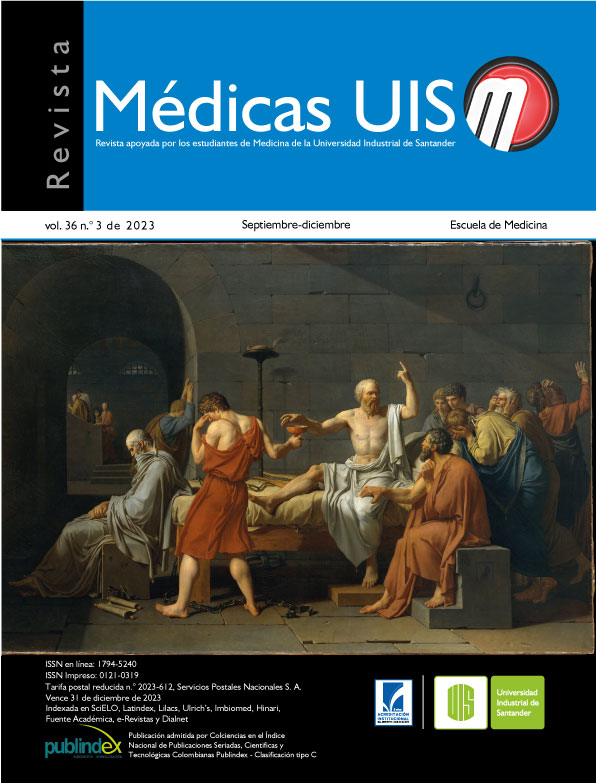Abstract
Introduction: living donor kidney transplantation accounts for 23 % of transplants in Colombia, and most postulated donors do not complete the process. Therefore, this study aimed to describe the reasons for unfinished effective living kidney donation, characterizing the potential and effective living kidney donors evaluated in Colombiana de Trasplantes. Methodology: in a cross-sectional study, we retrospectively reviewed the medical records of 1488 potential donors, evaluated between 2008 and 2019. A descriptive and bivariate analysis of potential and effective donors was made. Additionally, we described the living donation process and reasons for non-donation in its different phases. Results: only 36.9 % of all the possible donors became effective donors. Of potential donors, 15.4% were not approved by mental health, 31.8 % were contraindicated by nephrology or surgery, the medical board did not authorize 11 %, and 4.7 % of donors were approved but did not complete the process. The most frequent reasons for non-donation due to medical contraindications were arterial hypertension, anatomic anomaly, and proteinuria greater than 300 mg/day. Effective donors were generally younger, with lower body mass index and higher frequency of first-degree relationships. Conclusions: only one-third of potential donors become effective donors. The main reasons for non-donation are clinical, but a critical percentage is disqualified for mental health reasons and for dropping out of the process.
References
Lv JC, Zhang LX. Prevalence and Disease Burden of Chronic Kidney Disease. Adv Exp Med Biol. 2019;1165:3-15.
Agarwal R. Defining end-stage renal disease in clinical trials: a framework for adjudication. Nephrol Dial Transplant. 2016;31(6):864-7.
Liyanage T, Ninomiya T, Jha V, Neal B, Patrice HM, Okpechi I, et al. Worldwide access to treatment for end-stage kidney disease: a systematic review. Lancet. 2015;385(9981):1975-82.
Colombia. Bogotá D. C. Fondo Colombiano de Enfermedades de Alto Costo. Magnitud, tendencia y acceso a los servicios de salud en las personas con enfermedad renal crónica en el marco del aseguramiento en Colombia. Cuenta de alto costo, abril 2022.
Colombia. Instituto Nacional de Salud y Red Nacional de Trasplantes y Bancos de Sangre. Informe anual red de donación y trasplantes. 2017.
Colombia. Instituto Nacional de Salud de Colombia. Informe anual Red Donación y Trasplantes de Tejidos 2021. Bogotá DC, Colombia; 2021.
Colombia. Instituto Nacional de Salud, Ministerio de Salud y Protección Social. Informe ejecutivo Red de Donación y Trasplantes 2022. Bogotá DC, Colombia; 2022.
Colombia. Ministerio de la Protección Social. Decreto 2493 de 2004 por el cual se reglamentan parcialmente las leyes 9 de 1979 y 73 de 1988, en relacion con los componentes anatómicos. (Ag. 4, 2004)
Kaballo MA, Canney M, O’Kelly P, Williams Y, O’Seaghdha CM, Conlon PJ. A comparative analysis of survival of patients on dialysis and after kidney transplantation. Clin Kidney J. 2018;11(3):389-393.
Abouna GM. Organ Shortage Crisis: Problems and Possible Solutions. Transplant Proc. 2008;40(1):34–38.
Port FK, Wolfe RA, Mauger EA, Berling DP, Jiang K. Comparison of survival probabilities for dialysis patients vs cadaveric renal transplant recipients. JAMA. 1993;270(11):1339–43.
Laupacis A, Keown P, Pus N, Krueger H, Ferguson B, Wong C, et al. A study of the quality of life and cost-utility of renal transplantation. Kidney Int. 1996;50(1):235–42.
Barnieh L, Collister D, Manns B, Lam NN, Shojai S, Lorenzetti D, et al. A Scoping Review for Strategies to Increase Living Kidney Donation. Clin J Am Soc Nephrol. 2017;12(9):1518–27.
Ghelichi-Ghojogh M, Ghaem H, Mohammadizadeh F, Vali M, Ahmed F, Hassanipour S, et al. Graft and Patient Survival Rates in Kidney Transplantation, and Their Associated Factors: A Systematic Review and Meta-Analysis. Iran J Public Health. 2021;50(8):1555-63.
Nemati E, Einollahi B, Pezeshki ML, Porfarziani V, Fattahi MR. Does kidney transplantation with deceased or living donor affect graft survival? Nephro-Urol Mon. 2014;6(4):e12182.
Cholin LK, Schold JD, Arrigain S, Poggio ED, Sedor JR, O’Toole JF, et al. Characteristics of Potential and Actual Living Kidney Donors: A Single-center Experience. Transplantation. 2023;107(4):941- 951.
Moore DR, Feurer ID, Zaydfudim V, Hoy H, Zavala EY, Shaffer D, et al. Evaluation of living kidney donors: variables that affect donation. Prog Transplant. 2012;22(4):385-392.
Báez Y, Girón F. Guía de práctica clínica para la evaluación y seguimiento del donante vivo de riñón. Colombiana de Trasplantes. 2017. Disponible en: https://colombianadetrasplantes.com/archivos/GPC-para-la-evaluacion-y-seguimiento-del-donante-vivo-de-rinon836.pdf
Colombia. Ministerio de Salud de Colombia. Resolución 8430 de 1993. (Oct 4, 1993)
World Medical Association. World Medical Association Declaration of Helsinki: ethical principles for medical research involving human subjects. JAMA. 2013;310(20):2191-4.
International Summit on Transplant Tourism and Organ Trafficking.. The Declaration of Istanbul on Organ Trafficking and Transplant Tourism. Clin J Am Soc Nephrol.. 2008;3(5):1227-31.
Grigorescu M, Kemmner S, Schönermarck U, Sajin I, Guenther W, Cerqueira TL, et al. Disqualification of Donor and Recipient Candidates From the Living Kidney Donation Program: Experience of a Single-Center in Germany. Front Med (Lausanne). 2022;9:904795.
Gozdowska J, Jankowski K, Bieniasz M, Wszoła M, Domagała P, Kieszek R, et al. Characteristics of potential living kidney donors and recipients: Donor disqualification reasons--Experience of a polish center.Transplant Proc. 2013;45(4):1347-50.
Lapasia JB, Kong SY, Busque S, Scandling JD, Chertow GM, Tan JC. Living donor evaluation and exclusion: The Stanford experience. Clin Transplant. 2011;25(5):697–704.
Gregorini M, Martinelli V, Ticozzelli E, Canevari M, Fasoli G, Pattonieri EF, et al. Living Kidney Donation Is Recipient Age Sensitive and Has a High Rate of Donor Organ Disqualifications. Transplant Proc. 2019;51(1):120–123.
Simsek A, Doğan SM, Gurbuz H, Ulutas O, Toplu S, Turgut A, et al. Living Donor Kidney Transplantation: Why Potential Donors and Recipients do not Achieve it. Malatya Algorithm. Rev Nefrol Dial Traspl. 2020;40(4):304–310.
Thiessen C, Jaji Z, Joyce M, Zimbrean P, Reese P, Gordon EJ, et al. Opting out: A single-centre pilot study assessing the reasons for and the psychosocial impact of withdrawing from living kidney donor evaluation. J Med Ethics. 2017;43(11):756–761.
Villafuerte Ledesma HM, De Sousa Amorim E, Peri L, Musquera M, Palou E, Lozano M, et al. Impact of Discards for Living Donor Kidney Transplantation in a Transplant Program. Transplant Proc. 2019;51(10):3222–3226.
Khalifeh N, Hörl WH. Gender and living donor kidney transplantation. Wien Med Wochenschr. 2011;161(5–6):124–127

This work is licensed under a Creative Commons Attribution 4.0 International License.
Copyright (c) 2023 Médicas UIS

